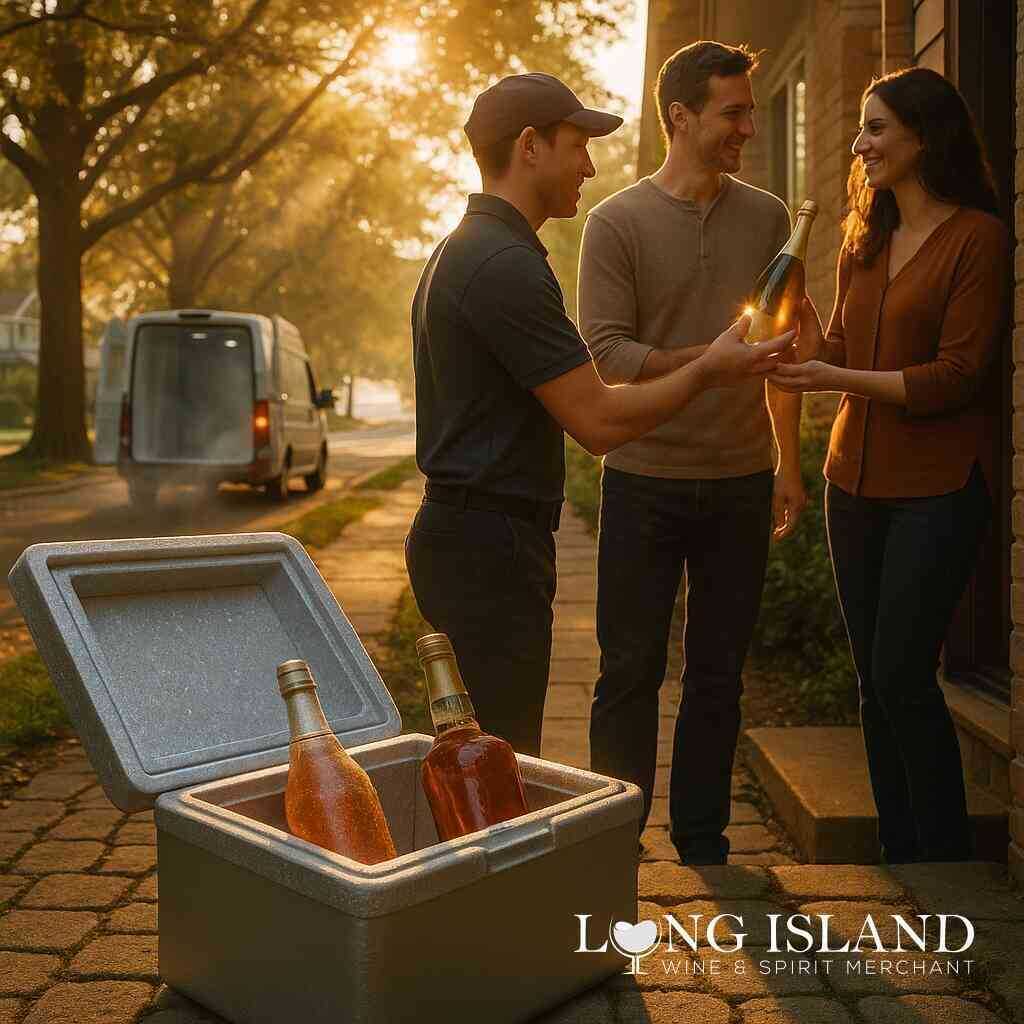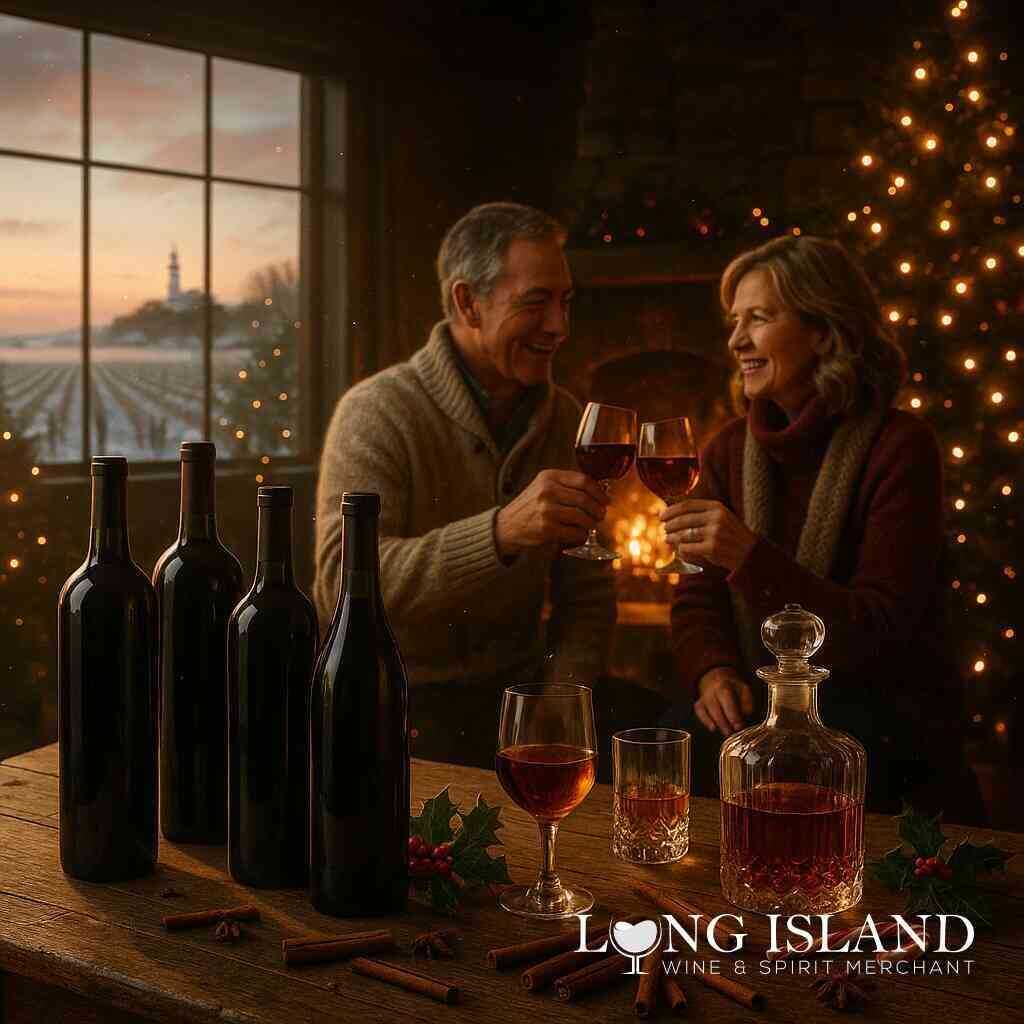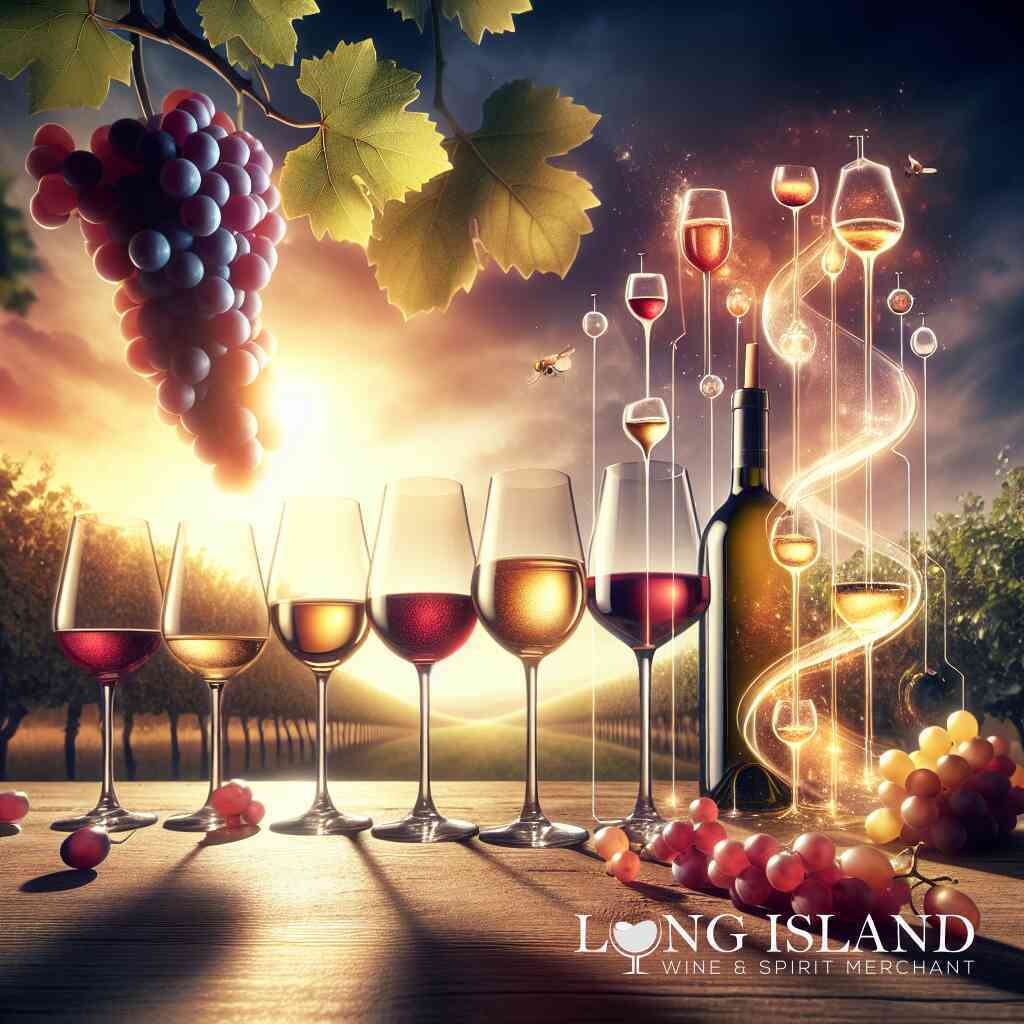
How Much Alcohol Is in a Full Glass of Wine?
May 19, 2024
Uncorking the Basics of Wine Alcohol Content
Understanding Alcohol by Volume (ABV)
When we delve into the world of wines and spirits, one fundamental aspect that is often a topic of interest is the Alcohol by Volume (ABV). ABV is a standard measure used worldwide to quantify the amount of alcohol, that is, ethanol present in an alcoholic beverage. In wines, the ABV can range significantly, usually from about 5.5% to around 15%, and sometimes even higher for certain fortified wines. This variance is not just incidental but is a direct result of numerous factors including grape variety, climate, and the winemaking process itself. The significance of understanding ABV comes from its utility in helping consumers gauge the strength of their wine, enabling a more informed drinking experience. Recognizing the ABV on a wine label, which is a mandatory disclosure in many countries, empowers the drinker to make decisions aligned with their preferences and drinking limits.
The Science Behind Wine Fermentation
The creation of wine is nothing short of alchemical, it’s a process steeped in tradition yet grounded in science. The journey from grape to glass is largely governed by the process of fermentation, a metabolic phenomenon converting sugar into alcohol and carbon dioxide through the action of yeast. The type of grape, the terroir (the unique environment in which the grapes are grown), and the specific strains of yeast used can profoundly affect the outcome of this transformation. The fermentation process determines not just the alcohol content but also the flavor profile of the wine. White wines tend to undergo cooler fermentation to preserve their delicate aromatic compounds, while red wines often ferment at higher temperatures, allowing for more extensive extraction of flavors, colors, and tannins from grape skins.
Comparing Wine to Other Alcoholic Beverages
Wine stands distinct within the broad category of alcoholic beverages, not only in terms of preparation but also in alcohol content. Compared to beer, which typically hovers around 4-6% ABV, wine usually offers a higher concentration of alcohol. On the other hand, spirits such as vodka or whiskey, with ABVs starting at around 40%, are far stronger than wine in terms of alcohol content. This distinction is crucial, as it underscores the variations in consumption practices appropriate for different types of alcohol. For instance, while a standard serving of wine is 5 ounces, the equivalent measure for beer is 12 ounces, and for spirits, it’s a mere 1.5 ounces. Understanding these differences is paramount in facilitating responsible drinking and enjoying the nuanced world of alcoholic beverages.
Navigating Through Red, White, and Rose
Red Wine Alcohol Content Basics
Red Wine Alcohol content typically ranges from 12% to 15% ABV, showcasing a robust flavor profile that is as diverse as the regions from which they originate. The alcohol level in red wine can be attributed to the fermentation process where the skin of the grapes is left to macerate, contributing not just to the color but also to the body and tannins of the final product. Varieties such as Cabernet Sauvignon, Merlot, and Shiraz are known for their higher alcohol content, making them perfect contenders for your wine glass when searching for something with a bit of warmth. At Long Island Wine & Spirit Merchant, enthusiasts of Long Island wine can delve into an extensive selection, discovering the perfect bottle to match their taste and occasion. Whether you’re drawn to the deep berries of a robust Cabernet or the spicy notes of a complex Shiraz, our wine rack has something that will not only delight your palate but also add a touch of elegance to any gathering.
In considering the best wine to accompany your next meal or celebration, it’s essential to bear in mind that the alcohol content can significantly affect its pairing capabilities. A general rule of thumb is that heavier, more alcoholic red wines pair splendidly with rich dishes, such as red meats or heavy pasta, enhancing the dining experience through complementary flavors and intensity.
White Wine: A Lighter Touch?
White wine differs markedly from its red counterpart, not only in color but often in alcohol content as well. Typically, white wines feature an ABV ranging from 9% to 14%, reflecting a spectrum that can accommodate both enthusiasts of lighter, crisper wines and those who prefer something with a bit more body. The process of making white wine usually involves the fermentation of grape juice alone, omitting the grape skins which contribute to the higher tannin and alcohol levels seen in red wines. This results in a beverage that is not just lighter in hue but often more delicate, presenting a refreshing acidity that can perfectly complement seafood, chicken, and vegetarian dishes.
From the sweet whispers of a Riesling to the vibrant zests of a Chardonnay, white wine details embody a range that is both inviting and intricate. At Long Island Wine & Spirit Merchant, the quest for a crisp Seyval Blanc or a buttery Chardonnay ends with our carefully curated white wine selection tailored to elevate your dining experience and quench your thirst for quality.
Rose Wine Alcohol Content: Finding the Middle Ground
Rose wine offers a delightful middle ground for those torn between the robustness of red wines and the crispness of white wines, with alcohol content typically falling between 11% to 13% ABV. Characterized by its beautiful pink hue, the rose is crafted by allowing the juice of red grapes to have brief contact with the skins, imparting a color that can range from pale salmon to vibrant cherry. This process, while simple, creates a wide variety of flavor profiles, from dry to sweet, making rose an incredibly versatile choice for wine lovers.
For aficionados looking to expand their palate or simply enjoy a refreshing glass on a warm day, rose wine proves to be an exceptional choice. Whether savoring the light fruity notes of a Provencal rose or indulging in the rich berry flavors of a domestic blend, the experience is as enriching as it is enjoyable. Long Island Wine & Spirit Merchant takes pride in offering an exquisite range of rose wine characteristics that promise to transport your senses and add a touch of sophistication to every sip. From the casual dinner at home to the grandest of parties, rose wine stands as a testament to the elegance and diversity of the world of wines.
The Standard Pour: Serving Sizes and Their Impact
What Constitutes a Standard Wine Serving
When selecting your wine glass, it’s essential to understand what constitutes a standard wine serving to ensure responsible drinking. A standard wine serving is generally considered to be 5 ounces, a measure that helps maintain consistency across different settings, from a casual evening at home to a more formal wine-tasting event. This measurement is not arbitrary, it reflects a balance between enjoying the wine’s flavors and aromas while keeping moderation in mind. Understanding the standard wine serving size can also enhance your appreciation of the wine, allowing for accurate comparisons of alcohol content across different types of wines. Whether you’re exploring the vivid landscapes of Long Island wine or discovering a new favorite from amongst international varieties, recognizing this serving size is the first step towards a more informed and enjoyable wine experience.
In the context of alcohol, moderation is key, and this standard serving size plays a crucial role in promoting moderate wine drinking. When adhering to this guideline, wine enthusiasts can enjoy the rich tapestry of flavors and aromas that wine has to offer without inadvertently overindulging. This is especially relevant when exploring the diverse selection available at Long Island Wine & Spirit Merchant, where every bottle tells a story, and each glass holds a world of experience waiting to be discovered.
Glass versus Bottle: Understanding Serving Differences
The distinction between enjoying wine by the glass and by the bottle goes beyond mere quantity, it touches on the nuances of wine culture and personal preference. When opting for a glass, the focus is often on the individual experience, savoring the wine’s unique character and how it complements the moment or the meal. This choice allows for greater variety within a single sitting, as one can switch from a full-bodied red wine to a crisp white or a refreshing rosé, tailoring each serving to suit different courses or moods.
Conversely, choosing a bottle of wine tends to be a more communal affair, shared among friends or during a special occasion. It invites a shared experience, where the act of uncorking the bottle and pouring each glass becomes part of the ritual that enhances the communal bond. Moreover, when selecting a bottle, especially from a curated wine selection, the choice often reflects a consensus of preference, a shared anticipation for the wine’s story as it unfolds with each glass poured.
Understanding these serving differences is not merely a matter of logistics but a reflection of the wine’s role in enriching the dining experience and fostering connections. Whether through a single glass or a shared bottle, wine has the remarkable ability to transform a simple gathering into a memorable event.
The Influence of Wine Glass Shape on Alcohol Consumption
The shape of your wine glass isn’t just a matter of aesthetic preference that can significantly influence your wine consumption experience. While the wine’s alcohol content remains unchanged, the glass’s design can affect the perception of the wine’s flavors and aromas, as well as how one pours and enjoys the wine. For instance, wider bowls are typically used for red wines, allowing the wine to breathe and fully release its complex bouquet of aromas. This design encourages slower, more deliberate consumption, enhancing the sensory experience of each sip.
On the other hand, glasses with narrower bowls preserve the crispness and delicate aromas of white and rosé wines, focusing the bouquet and cooling the wine’s surface. This can lead to a tendency to take smaller sips, subtly pacing the drinker’s consumption rate. The intriguing interplay between glass shape and drinking behavior underlines the importance of selecting the appropriate glass for each type of wine. By doing so, one can not only heighten the enjoyment of the wine but also contribute to a culture of responsible drinking wine.
In the end, the choice of wine glass is another layer in the rich tapestry of the wine-drinking experience, a testament to the thought and care that goes into every aspect of enjoying fine wine. Whether exploring the robust selections at Long Island Wine & Spirit Merchant or enjoying a quiet evening at home, the right glass can make all the difference in savoring each moment to its fullest.
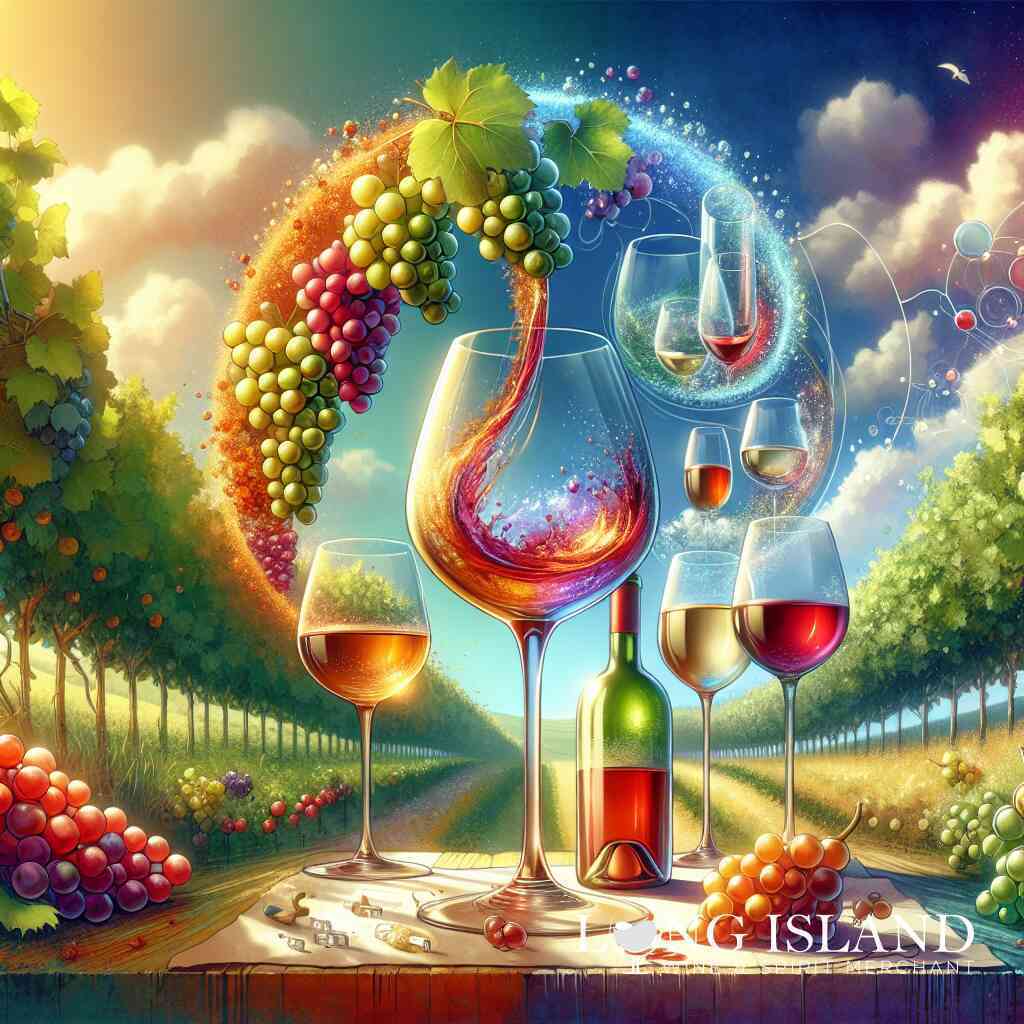
Calculating Alcohol in Your Glass
Decoding Wine Labels: ABV Information
Understanding the alcohol content in your glass of wine begins with decoding the wine label. Wine labels carry crucial information, including the Alcohol by Volume (ABV) percentage, which can help you gauge how much alcohol you’re consuming with each glass. The ABV Understanding wine labels can vary significantly across different types and brands of wine, generally falling anywhere from 5.5% to 15% for table wines and even higher for fortified wines. A higher ABV percentage means the wine contains more alcohol. Grasping this concept is essential for those who wish to moderate their wine intake or who are curious about the specifics of what they’re drinking. Long Island Wine & Spirit Merchant places a strong emphasis on educating customers about wine label literacy as part of their dedication to Long Island wine education, empowering wine enthusiasts to make informed decisions.
Tools and Apps to Estimate Wine Alcohol Content
In today’s digital age, there are numerous tools and apps designed to estimate the alcohol content in your glass of wine, making it simpler for wine enthusiasts to stay informed about their consumption. These digital aides range from simple ABV calculators to sophisticated apps that can scan wine labels and provide detailed information about the wine’s characteristics, including its alcohol content. By leveraging technology, drinkers can easily track their intake, compare different wines, and even receive personalized recommendations based on their preferences through tools like the wine taste quiz. For those looking to explore the digital side of wine enjoyment, Long Island Wine & Spirit Merchant often recommends such apps as part of their wine drinker guide for Long Island residents and beyond, enhancing the wine experience through innovation and information.
Practical Tips for Accurately Measuring at Home
Accurately measuring the alcohol content in your glass of wine at home doesn’t require a sommelier’s expertise. Simply understanding the standard wine serving size (5 ounces) and the ABV percentage listed on the wine label can give you a good estimate of how much alcohol you’re consuming. For precision, consider using a measuring cup or a wine pourer with measurement markings to ensure you’re pouring the standard serving size. Additionally, keeping track of the number of glasses consumed over a period can help monitor alcohol intake. These practical tips, coupled with the knowledge sourced from reliable platforms like Long Island Wine & Spirit Merchant, can guide both novice and seasoned wine drinkers in enjoying their favorite wines responsibly and with a greater understanding of their alcohol content. Whether you’re purchasing a custom wine case service near Long Island or selecting a bottle from your home collection, these practical steps can significantly enhance your wine-drinking experience.
Moderate Wine Consumption: Sipping Smart
Defining Moderate Drinking with Wine
Moderate wine drinking is a concept that has been extensively studied and defined by health professionals, offering a guideline for consumers to enjoy wine responsibly without adversely affecting health. The definition of moderate drinking can vary slightly, but it is generally recognized as up to one standard drink per day for women and up to two for men. A standard drink is typically characterized as 5 ounces of wine, which has about 12% Alcohol by Volume (ABV). Understanding this measure is crucial for moderate wine drinking, as it enables individuals to enjoy the rich variety of wines available, including those meticulously curated selections at Long Island Wine & Spirit Merchant, without overstepping the boundaries recommended for health and well-being.
While exploring the vast selection of fine wines and good spirits at Long Island Wine & Spirit Merchant, from the sweet melody of a rose wine to the robust eloquence of a full-bodied red, keeping moderation in mind ensures that the experience remains a healthy pleasure. It’s about striking a balance, allowing for the appreciation of wine’s complexity and the depth of its flavors, while adhering to guidelines that keep enjoyment well within the realms of responsibility.
Alcoholic Units in Wine Explained
Alcoholic units are a useful measure to understand and control alcohol consumption. In the context of wine, this unit measures the amount of pure alcohol present in a specific serving size of wine. The concept is particularly beneficial when comparing wines with varying degrees of alcohol content, which can range significantly. For instance, a full glass of wine at 12% ABV contains about 14 grams or 1.4 units of pure alcohol. This standardization helps individuals track their alcohol intake more accurately, promoting a culture of informed drinking.
When enthusiasts embark on the journey of wine discovery at Long Island Wine & Spirit Merchant, from exploring a Long Island premium spirits selection to delving into the world of marsala and Moscato wines, the understanding of alcoholic units becomes an essential tool. It empowers wine lovers to make choices that align with their lifestyle, preferences, and health considerations, enabling a more profound appreciation of each curated bottle’s unique story and the craftsmanship behind it.
Health Facts: The Benefits and Risks of Wine Consumption
The journey through wine’s rich landscape of aromas and tastes is not only an exploration of cultural and culinary delight but also one that intersects with health. The narrative surrounding the health benefits and risks associated with wine is complex and marked by ongoing research and debates. On one hand, moderate wine consumption has been linked to certain health benefits, such as improved heart health and a lower risk of certain diseases when part of a balanced diet. These benefits are often attributed to antioxidants found in grapes, such as resveratrol, which are believed to offer protective effects.
However, it’s crucial to approach wine consumption with an awareness of its potential risks. Excessive wine intake can lead to a range of health issues, including liver disease, increased risk of certain cancers, and negative impacts on mental health. It underscores the importance of moderation and informed choice, advocating for a well-balanced approach to wine drinking.
At Long Island Wine & Spirit Merchant, patrons are invited not only to discover top wine brands on Long Island but to engage in a broader conversation about wine’s role in a healthy lifestyle. Through wine-tasting events in Long Island and comprehensive wine education efforts, there’s a dedicated endeavor to cultivate a community of wine lovers who appreciate fine wine and good spirits within the framework of informed, moderate consumption, enriching the wine experience with a layer of wellness and responsibility.
Enhancing Your Wine Education at Long Island Wine & Spirit Merchant
Wine Tasting Events: A Gateway to Understanding
Diving into the world of wine can be an exhilarating journey, one richly enhanced by participating in wine-tasting events in Long Island. At Long Island Wine & Spirit Merchant, we believe that wine-tasting events serve as an integral gateway to understanding the vast tapestry of wines available to enthusiasts. These events are not just about sampling a variety of wines, they’re about immersing oneself in the stories behind each label, understanding the nuances of grape varietals, and learning how terroir influences the flavor profile of your wine glass.
Our wine-tasting events are meticulously curated to cater to both novices and aficionados alike. They are designed to guide you through the sensory experiences of each sip, highlighting the distinct characteristics that distinguish one wine from another. From the robust eloquence of a full-bodied red to the sweet melody of a crisp rosé, our events cover the panoramic spectrum of wine. These gatherings are also a unique opportunity to interact with fellow wine enthusiasts and experts, providing a platform for engaging discussions and insightful exchanges about wine culture, food pairings, and the latest trends in the wine world.
Explore Fine Wine and Good Spirits at Long Island
The heart of Long Island Wine & Spirit Merchant lies in our commitment to offering an unparalleled selection of fine wine and good spirits. Within our walls in Commack, New York, and through our order fine wine online service, we provide access to an exquisite range of wines from renowned vineyards across the globe. Whether you’re searching for a bottle of sweet red wine for a cozy night in, the perfect dry white wine to accompany a special meal, or a unique artisan spirit to add to your collection, our selection caters to every preference and occasion.
Our wine rack is a testament to our passion for the wine journey, featuring everything from Long Island wine favorites to international masterpieces. We continually work to expand our inventory, ensuring that our customers have access to both the classic staples and the latest innovations in the wine and spirit industry. Each bottle in our collection is selected with care, considering both its quality and its story, so that each purchase can be a discovery in itself.
Leveraging Our Wine Taste Quiz for Personalized Recommendations
At Long Island Wine & Spirit Merchant, we understand that each wine drinker has a unique palette and preferences. To assist in navigating the often overwhelming world of wine, we’ve developed a specialized wine taste quiz that serves as your wine drinker guide in Long Island. This intuitive quiz takes into account your tastes, preferences, and drinking habits to provide tailored wine recommendations, simplifying the decision-making process and enhancing your wine experience.
By leveraging our wine taste quiz, customers can embark on a journey of discovery that is both personalized and informed. The recommendations offered can help you explore new varietals you might not have considered, uncover hidden gems within our wine selection, and find the perfect wines to match any occasion or meal. We aim to make the exploration of fine wine and good spirits an accessible, enjoyable, and enriching experience for everyone, from the curious newcomer to the seasoned connoisseur.
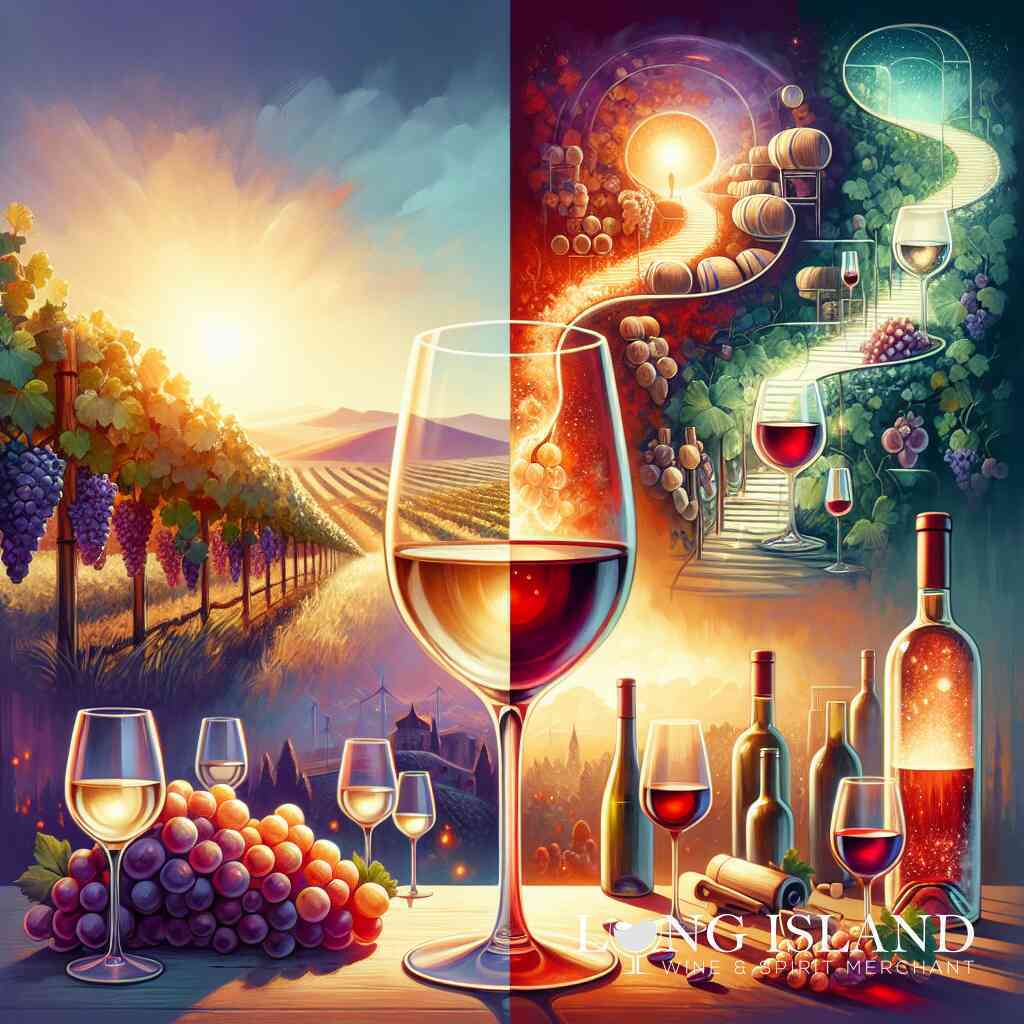
Raising the Glass: Concluding Thoughts on Wine Alcohol Content
Responsible Drinking: Enjoying Wine in Moderation
The journey from grape to glass is a story of culture, history, and science, culminating in the myriad of wine options available to us. However, an integral part of this story is the role of moderation in wine consumption. Understandably, alcohol by volume in beverages varies, making some wines more potent than others. It’s not just about savoring the flavors or pairing the perfect wine with dinner. It’s also about understanding and respecting the impact of alcohol on our bodies and lives.
Long Island Wine & Spirit Merchant champions the art of responsible drinking by offering advice and insights through wine education initiatives. By equipping wine enthusiasts with knowledge on everything from alcohol content to the nuances of wine tasting, the goal is to encourage a balanced approach to wine enjoyment. Moderation, in this context, allows us to appreciate the depth and breadth of wines available, from the robust notes of a fine red to the delicate whispers of a crisp white, without compromising health or well-being.
Your Wine Glass, Your Wine Journey: Embracing Personal Preferences
Every wine lover embarks on a unique journey, guided by personal tastes, experiences, and the desire to explore. Your wine whether filled with a robust Long Island wine akin to a warm hug on a cold evening or a delicate rose that whispers of summer picnics-is a reflection of this personal journey. Long Island Wine & Spirit Merchant recognizes that wine is an individual experience, enhanced not only by the wine itself but also by the stories, memories, and moments it accompanies.
Offering a diverse selection of wines and spirits, and even a personalized wine drinker guide via the wine taste quiz, Long Island Wine & Spirit Merchant invites you to explore and expand your wine horizons. Here, your preferences are honored and nurtured, allowing you to curate a wine experience that mirrors your journey, inclinations, and curiosities. It’s not just about stocking your wine rack, it’s about enriching your life’s tapestry with each bottle selected and every glass poured.
Staying Informed: The Importance of Ongoing Wine Education
Wine education is an ongoing journey, one that enriches our understanding and appreciation of wine. It’s a commitment to not just enjoying wine, but understanding its essence-from grape varieties and winemaking processes to tasting techniques and the subtleties of aroma and flavor. Long Island Wine & Spirit Merchant is your partner in this educational voyage, offering resources, wine-tasting events, and insights that dive deep into the world of wine.
The importance of staying informed cannot be overstated. It’s what allows us to make educated choices about the wines we drink, understand the implications of alcohol content, and engage with wine in a way that’s both responsible and rewarding. By embracing ongoing education, we not only enhance our wine journey but also contribute to a broader culture of informed, respectful, and passionate wine enthusiasts.
In conclusion, the alcohol content in a full glass of wine is just one chapter in the vast narrative of wine appreciation. From the responsible enjoyment of wine in moderation to the personal journey each wine lover embarks on, the critical role of continuous education element contributes to a richer, more fulfilling wine experience. At Long Island Wine & Spirit Merchant, we raise our glasses to the journey ahead, inviting you to explore, learn, and celebrate the beautiful complexity of wine with us.
Frequently Asked Questions
Question: How can I accurately measure the alcohol content in a glass of wine to ensure moderate wine consumption?
Answer: Accurate measurement of alcohol content in a glass of wine is crucial for moderate wine consumption. At Long Island Wine & Spirit Merchant, we recommend using a standard wine serving of 5 ounces as a benchmark. Coupled with understanding the wine labels, where the Alcohol by Volume (ABV) percentage is indicated, you can determine how much alcohol you’re consuming. A standard glass of wine at 12% ABV equates to roughly 0.6 ounces of pure alcohol. For precision and responsible drinking, consider using a measuring cup or a specially designed wine pourer. Leveraging tools and resources, including our wine education, aids in making informed choices about your wine selection and consumption.
Question: What are the typical alcohol-by-volume wine percentages for red, white, and rosé wines?
Answer: The alcohol content in wine varies significantly across different types, including red, white, and rosé wines, primarily due to differences in fermentation processes and grape varieties. At Long Island Wine & Spirit Merchant, we’ve observed that red wine alcohol content typically ranges from 12% to 15% ABV, reflecting its bold flavors and rich textures. White wine, offering a lighter touch, usually features an alcohol content of 9% to 14% ABV. Rosé wine, finding the delightful middle ground, typically falls between 11% and 13% ABV. Understanding these ranges can help you choose a wine that matches your preferences for alcohol content, with our wine selection offering a variety of options within each category to suit any palate.
Question: Can you explain how the wine-tasting events at Long Island Wine & Spirit Merchant can enhance my understanding of wine alcohol percentages and moderate drinking practices?
Answer: Wine-tasting events at Long Island Wine & Spirit Merchant serve as an educational and immersive experience, guiding attendees through the nuances of wine, including alcohol percentages and the principles of moderate drinking. These events provide a platform to taste various wines under the guidance of experts, learn about the factors influencing their alcohol content, and understand how this impacts their taste and compatibility with food. Furthermore, our wine experts share insights on recognizing alcohol levels through tasting, allowing for a more informed approach to selecting and enjoying wine. By participating, you’ll gain practical knowledge that empowers responsible wine consumption while appreciating the diverse world of wine and spirits essentials.
Question: Regarding the blog title ‘How Much Alcohol Is in a Full Glass of Wine?’, how can Long Island Wine & Spirit Merchant help me find wines with specific alcohol content levels?
Answer: Long Island Wine & Spirit Merchant is dedicated to helping customers find wines that align with their preferences for alcohol content. Our extensive wine and spirits selection includes detailed labels with Alcohol by Volume (ABV) percentages, enabling you to choose based on your desired alcohol level. Whether you’re seeking a light white wine with lower ABV for a casual dinner or a robust red wine with higher alcohol content for a celebration, our knowledgeable staff can guide you through our curated wine rack. Moreover, our wine taste quiz, available both in-store and online, provides personalized recommendations, helping you explore wines that meet your specific alcohol content preferences and enhance your wine education journey.
Question: How does understanding alcoholic units in wine contribute to better wine health facts and responsible drinking habits?
Answer: Understanding alcoholic units in wine is pivotal for fostering responsible drinking habits and appreciating wine health facts. At Long Island Wine & Spirit Merchant, we emphasize the importance of this knowledge as part of our Long Island wine education initiative. Alcoholic units provide a standard measure for tracking alcohol intake, aiding in maintaining moderation and making informed choices about consumption. By being aware of the units in each glass of wine, you can better manage your alcohol consumption, aligning with health guidelines and minimizing the risk of adverse effects. We believe that informed customers can enjoy the rich diversity of fine wine and good spirits within a framework that prioritizes health and wellness.

